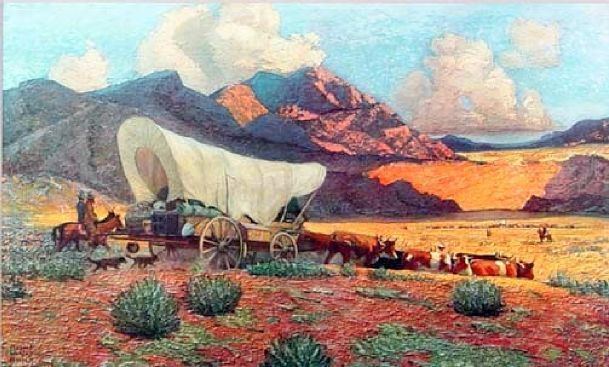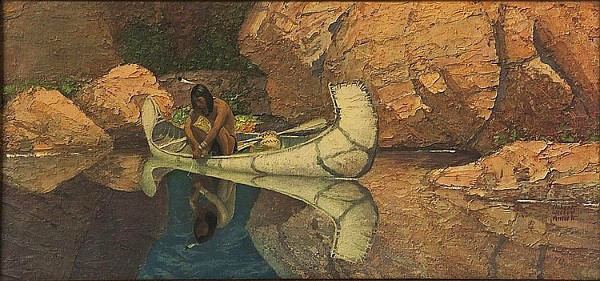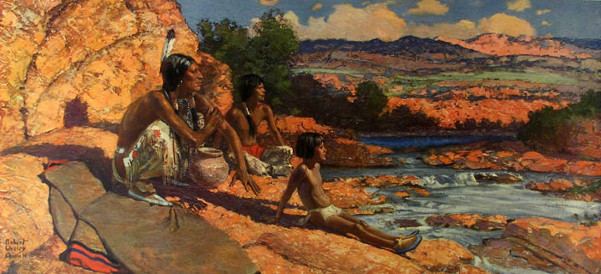 | ||
Died 1969, Old Greenwich, Connecticut, United States | ||
Robert Wesley Amick (1879-1969) was an American painter, illustrator and teacher who specialized in romantic paintings of the early western history of the United States. Amick studied at the Art Students' League of New York and the Yale School of Fine Art. He is best known for his American Old West art but painted equine, landscape and genre art of both eastern and western scenes during the Arts and Crafts era. He is perhaps best known for twelve paintings of the American West (including "Where the Sun Goes") that were widely reproduced in art prints for use in American schools. These and his portrait of the racehorse Man o' War are perhaps amongst his most memorable works.
Contents

Early life

Amick was born in a log cabin on Currant Creek on 15 October 1879, in Canon City, Colorado: he was one of six children. His parents came from pioneer stock and Amick was surrounded by scenes of everyday cowboy life as he grew up. He showed an early interest in art, creating pen and ink drawings as a small boy.
Education and Early Career

In 1900, Amick began to study law at the University of Pennsylvania but shortly after he transferred to Yale University at New Haven, Connecticut, where he graduated with a law degree in 1903. He worked for a short time in the art classes at Yale but was eventually discouraged from doing so by his law professors.

Amick began to practice law in Ohio. However, his ambition to work as an artist continued and he left his law practice to study art on a formal basis. He moved to New York City where he studied privately under George Bridgman and entered the Art Students' League, acquiring that technical expertise which is a marked characteristic of his canvases and graduating in 1909.
Career as an Artist
In his New York City studio at 63 Washington Square South he began his art career in 1909 as an illustrator for many of the popular magazines and periodicals of the day, including Scribner’s, The American, Redbook, Harper's Bazaar and Metropolitan.
He soon began to express himself on canvas with oils, with his abiding affection for the scenes of his childhood and the romance of America's early western history acting as the two greatest influences on his work. These became the dominant motive and mission of his life as an artist. His vivid colours, dynamic action and realistic portrayal of western scenes made his works extremely popular with calendar and lithographic companies during the 1920s and 1930s. His love of mountains, azure skies, sharply-etched light and shade and cowboys with their horses became his artistic trademarks.
In his later years, Amick resided in Old Greenwich, Connecticut and spent much of his time as a portrait painter and an instructor in art classes. He founded the Art Society of Greenwich in 1927.
Amick’s individual canvases may be found in most of the major private collections and museums of Western Art in the United States.
Death
Amick died in 1969. He is buried at Greenwood Pioneer Cemetery, Canon City, Colorado, next to his parents.
